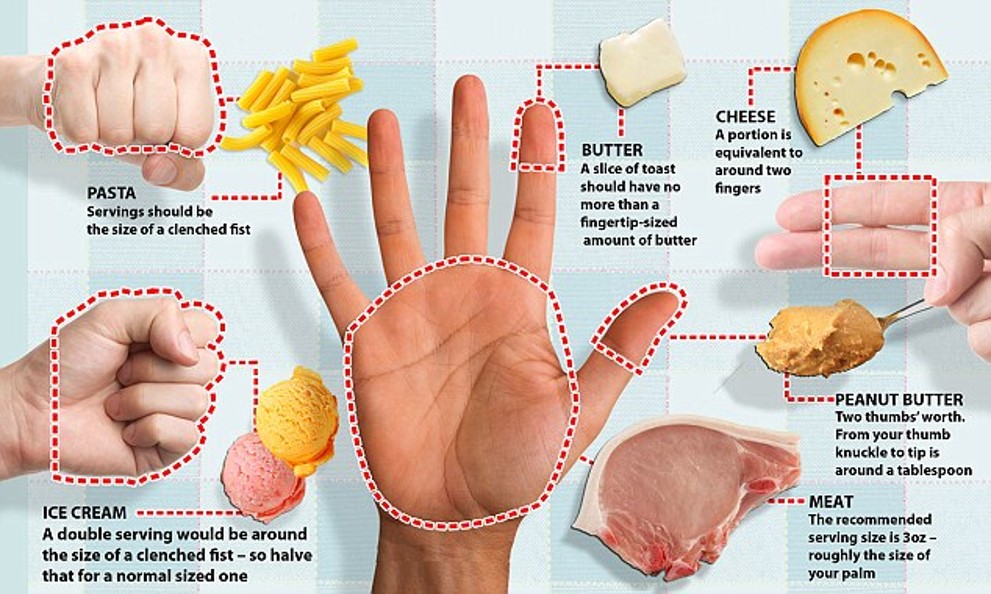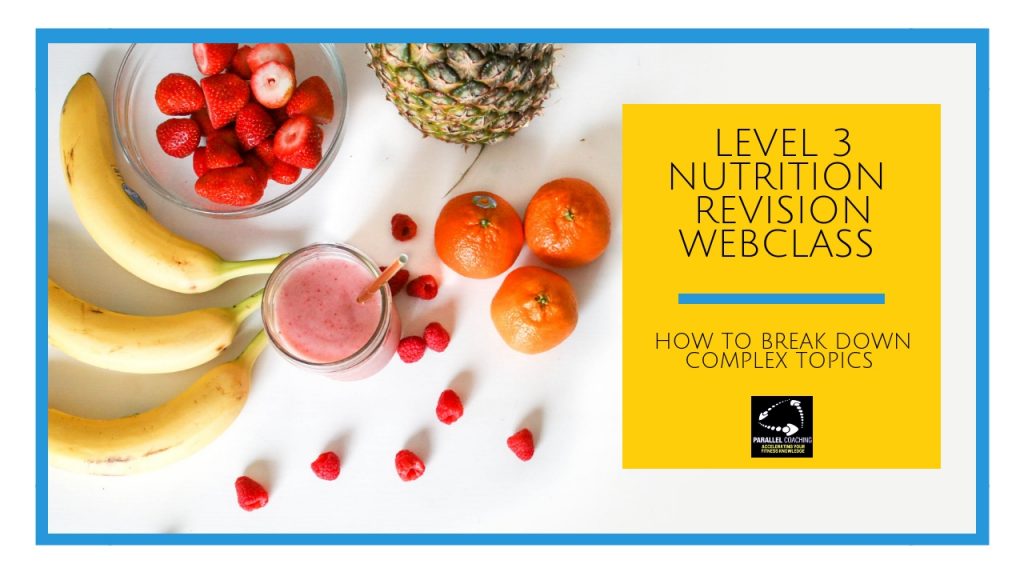In this 20 min webclass, we’ll teach you how to break down complex L3 Nutrition Revision topics into bite-sized memorable chunks…
I’m sure you’d agree, learning L3 Nutrition can be tough and has a fair few tricky and complex topics, like trying to remember all of the principles of exercise and all of the variables.
Know what I mean?
In today’s webclass I’m going to show you have you break down these complex topics into smaller chunks, meaning you can retain and recall the information at any point, especially on exam day.
Said differently, in the next 20-mins I’ll show you how to learn and accelerate all your future revision sessions, as well as drop a few key knowledge bombs to help you understand key principles.
Watch the L3 Nutrition Revision Webclass:
Here’s the timestamps for the video above
0:00 Intro
1:46 Why you should break it down?
3:12 The Formula to learning
4:44 Keeping it Simple
5:19 Key Mnemonics for Level 2 Principles of Exercise
11:55 Putting it into practice (5 steps to making a mnemonic)
15:12 Use our Mnemonics – The Revision Mastery Bootcamp for Level 3 Nutrition
Key mnemonics for L3 Nutrition Revision:
We refer to a few specific mnemonics in this web class, these include:
Alliteration:
Alliteration is a really easy method for remembering key facts, definitions and processes.
For your L3 Nutrition Revision, you need to know about the difference in the types of cholesterol. Alliteration can help you remember these.
The alliterations is:
HDL = Happy to Help
LDL = Litterbugs
This will help you remember which one is “the good” cholesterol and which is “the bad” cholesterol.
Acronyms:
Acronyms are a really flexible and creative way to remember processes. By remembering just one word (for example SMART) you can recall an entire set of principles or all of the components of exercise.
An example of an acronym inside the L3 Nutrition exam is SMART. This can be used to remind you of the 5 key components that need to be in place whenever you set a goal. You can see this on the image below…

Read more about SMART goals here >> Goals blog
Diagrams:
Diagrams are great, especially if you keep them simple, and easy to replicate. Ideally, you want to use diagrams that you can easily draw on your brain dump on exam day. Keep the drawings so simple that a 5-year-old could draw them.
We use this simple diagram to remember portion sizes of certain food types.

Analogies:
Analogies are a simple way of understanding the function and purpose of certain topics. This is best when you relate the new information to other things that you are familiar with.
For example, we talk about the need for quality food and nutrition being KINDA LIKE a car that needs quality petrol. You cannot fuel a car on “custard” or “tomato sauce” it needs a specific type of fuel.
Putting it into Practice:
You can build your own mnemonics using our 5 step sequence (in the video).
However, this can take time, energy and creativity that you may not have right now.
Instead, you can use ours…
We have designed dozens of mnemonics as part of our Level 3 Nutrition Revision Mastery Bootcamp.
They are all mapped to major awarding body syllabi so you know that you are learning topics that will come up in your exam. The mnemonics are easy to learn and remember and above all can save you hours of revision time.
You can access all of the Revision Mastery Bootcamp plus exclusive bonuses by clicking the link below:
L3 Nutrition Revision Mastery Bootcamp
Dedicated to More
Hayley
Parallel Coaching
You can also find us on the following platforms:
Instagram: https://www.instagram.com/parallelcoaching
Facebook: https://www.facebook.com/ParallelCoaching
Twitter: https://twitter.com/ParallelCoach
YouTube Channel: http://bit.ly/2F1Z1bs

